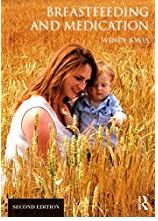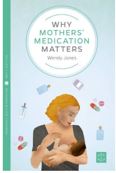The development of anaesthetic data was prompted at least in part by the questions from mothers are diagnosis, treatment and surgery for gallstones whilst pregnant. Women are more likely than men to have gallstones and they are more common after the birth of several children so unsurprisingly this frequently covers breastfeeding mothers.
So here are my thoughts and a fact sheet on the topic
gallstones and breastfeeding fact sheet
Gallstones are present in at least 10% of the population. They vary in size and shape and consist primarily of cholesterol or the bile pigment bilirubin. They occur twice as frequently in women as men. Risk factors include high cholesterol intake, obesity, having had several children and the use of oral contraceptives (Gould 2006).
Symptoms of gallstones
Gallstones frequently cause no symptoms but larger calculi (stones) can obstruct a duct causing sudden severe waves of pain in the upper right-hand side of the abdomen (just under the ribs) often radiating to the back and right shoulder. Feeling sick or vomiting, with a high temperature, shivering and sweating are also common.
Severe pain (biliary colic) may be precipitated by eating a fatty meal. Chronic symptoms may include intolerance to fatty foods, belching, bloating and mild epigastric pain.
Treatment is usually necessary if gallstones are causing symptoms – such as abdominal pain or complications – such as jaundice or acute pancreatitis
In these cases, keyhole surgery to remove the gallbladder may be recommended. This procedure, known as a laparoscopic cholecystectomy, is relatively simple to perform and has a low risk of complications. It is possible to lead a perfectly normal life without a gallbladder. The liver will still produce bile to digest food, but the bile will just drip continuously into the small intestine, rather than build up in the gallbladder (NHS www.nhs.uk/conditions/gallstones/#treating-gallstones)
Diagnosis of gallstones
Apart from acute symptoms often requiring emergency admission, diagnosis is by Ultrasound, MRI and CT scans all of which can be undertaken without interruption to breastfeeding together with blood tests. https://breastfeeding-and-medication.co.uk/fact-sheet/breastfeeding-after-ct-and-mri-scans
Treatment of gallstone
Simple over the counter painkillers (paracetamol and ibuprofen) may be sufficient. Anti spasmodic drugs may also be prescribed e.g. Hyoscine (Buscopan®). Anti nauseants e.g. cyclizine or ondansetron may be required. All can be used with continued breastfeeding (Jones 2018)
Ursodeoxycholic acid has been used for the management of gallstone disease, there is no evidence to support its use.
Surgery for gallstones
A laparoscopic cholecystectomy involves only small cuts in the abdomen to pass the instruments. It is normally carried out as a day case enabling return home on the same day or at most after an overnight stay. Full recovery takes around 10 days and mothers may need help with lifting and caring for toddlers.
It is possible to breastfeed as soon as the mother is awake and alert after surgery as the drugs stay in the system a short time. Doses of antibiotics and painkillers may be administered in theatre or in recovery, but these would normally be suitable for breastfeeding.
Analgesia (pain relief) after surgery for gallstones
Response to pain after surgery is very individual. The use of paracetamol plus non- steroidal drugs such as ibuprofen, naproxen and diclofenac may be sufficient for some. Others may need opiate drugs. Oramorph and dihydrocodeine are the preferred drugs during breastfeeding. Codeine should not be prescribed https://breastfeeding-and-medication.co.uk/fact-sheet/pain-relief-when-breastfeeding
It is not acceptable to prescribe a drug which is unsuitable to be taken by breastfeeding mother as there are risks to not continuing normal breastfeeding (risk of engorgement or mastitis, risk baby will not take milk from a bottle, risk of allergy on exposure to artificial formula) but above all prescription should be in accordance with the stated wishes of the mother to continue to feed as normal.
For more information on anaesthetics, anti-nauseants and analgesics see https://breastfeeding-and-medication.co.uk/fact-sheet/anaesthesia-and-breastfeeding and https://breastfeeding-and-medication.co.uk/fact-sheet/pain-relief-when-breastfeeding
References
Gould B.E. Pathophysiology for the Healthcare professional 3RD Ed Elsevier 2006
Hale TW Medications and Mothers Milk Springer 18th Ed 2019
Jones W Breastfeeding and Medication 2nd Ed Routledge 2018
LactMed actmed.nlm.nih.gov
NHS Choices – Gallstones www.nhs.uk/conditions/gallstones/
NICE Gallstone disease: diagnosis and management CG188 2014

